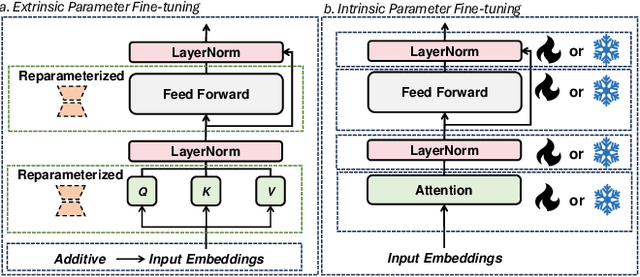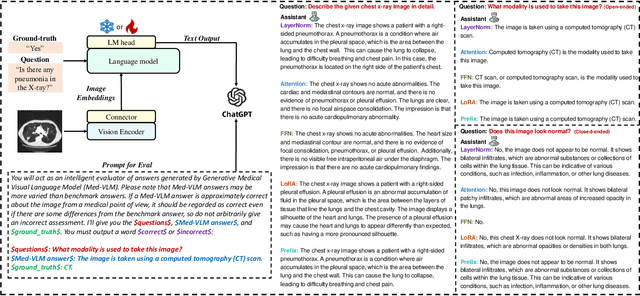Efficiency in Focus: LayerNorm as a Catalyst for Fine-tuning Medical Visual Language Pre-trained Models
Paper and Code
Apr 25, 2024



In the realm of Medical Visual Language Models (Med-VLMs), the quest for universal efficient fine-tuning mechanisms remains paramount, especially given researchers in interdisciplinary fields are often extremely short of training resources, yet largely unexplored. Given the unique challenges in the medical domain, such as limited data scope and significant domain-specific requirements, evaluating and adapting Parameter-Efficient Fine-Tuning (PEFT) methods specifically for Med-VLMs is essential. Most of the current PEFT methods on Med-VLMs have yet to be comprehensively investigated but mainly focus on adding some components to the model's structure or input. However, fine-tuning intrinsic model components often yields better generality and consistency, and its impact on the ultimate performance of Med-VLMs has been widely overlooked and remains understudied. In this paper, we endeavour to explore an alternative to traditional PEFT methods, especially the impact of fine-tuning LayerNorm layers, FFNs and Attention layers on the Med-VLMs. Our comprehensive studies span both small-scale and large-scale Med-VLMs, evaluating their performance under various fine-tuning paradigms across tasks such as Medical Visual Question Answering and Medical Imaging Report Generation. The findings reveal unique insights into the effects of intrinsic parameter fine-tuning methods on fine-tuning Med-VLMs to downstream tasks and expose fine-tuning solely the LayerNorm layers not only surpasses the efficiency of traditional PEFT methods but also retains the model's accuracy and generalization capabilities across a spectrum of medical downstream tasks. The experiments show LayerNorm fine-tuning's superior adaptability and scalability, particularly in the context of large-scale Med-VLMs.
 Add to Chrome
Add to Chrome Add to Firefox
Add to Firefox Add to Edge
Add to Edge